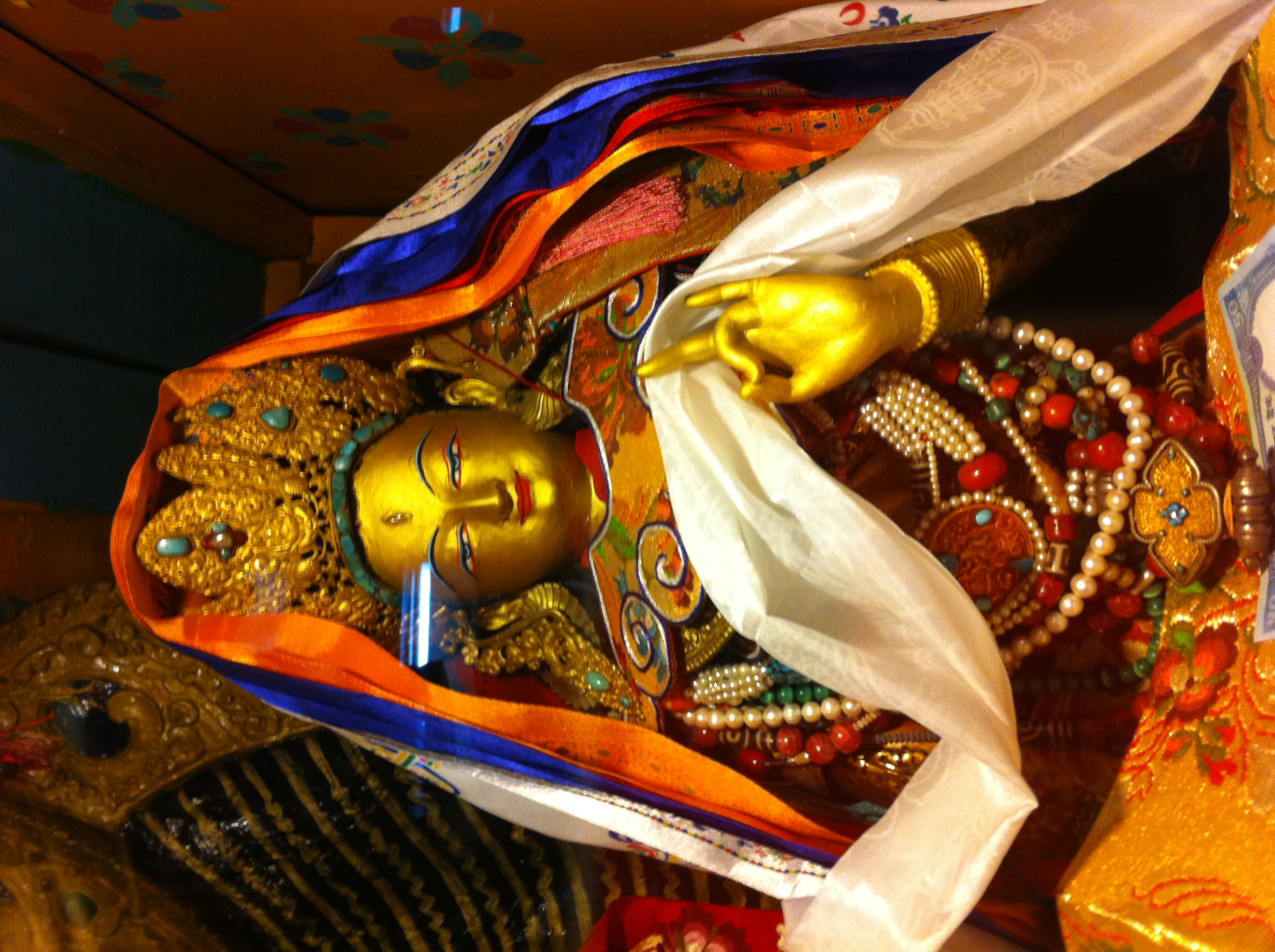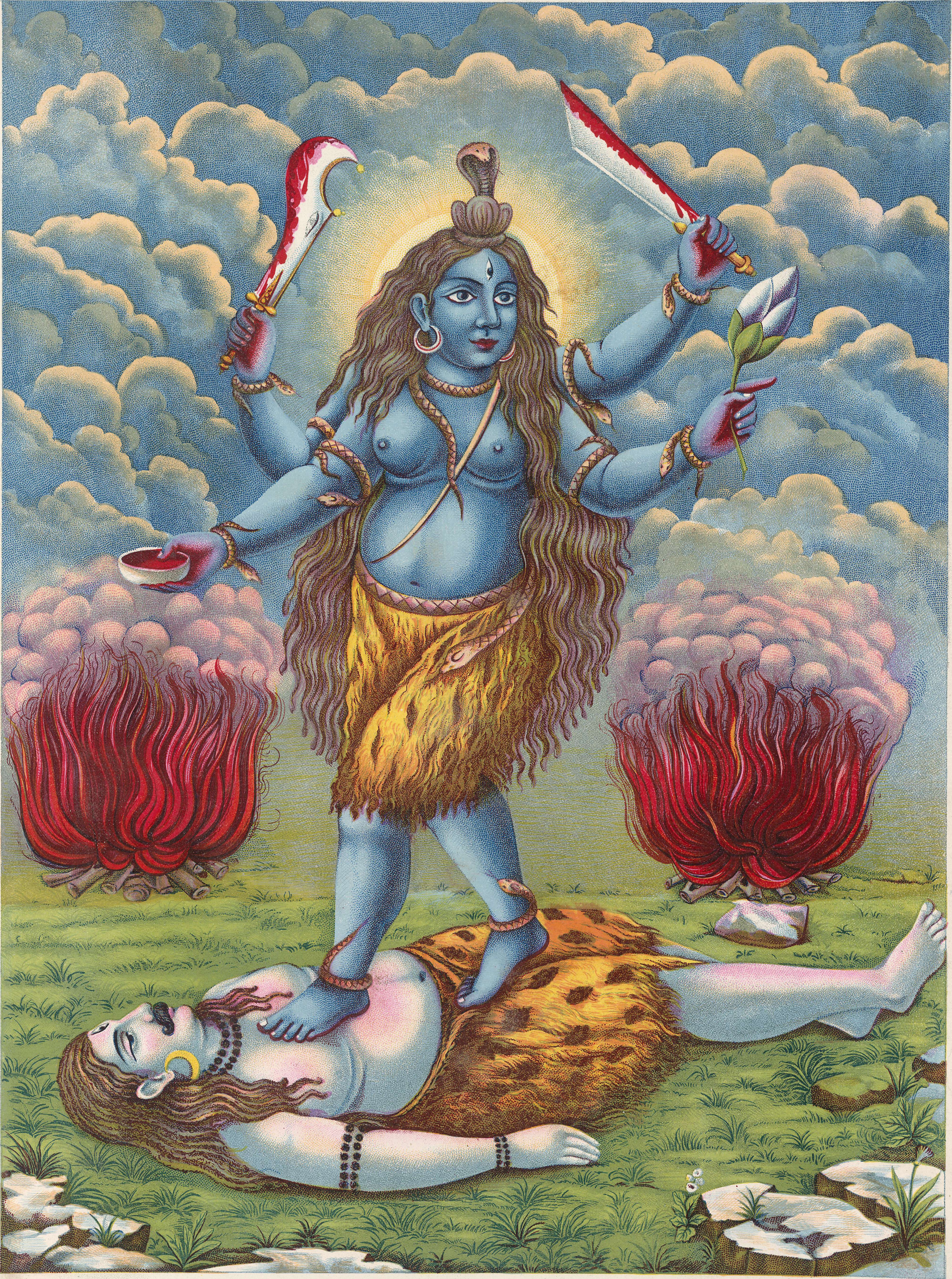|
Sipe Gyalmo
In the Bon religion Sipe Gyalmo (Queen of the World) is both a meditational deity and a protector deity. Despite her fierce appearance, as one of the manifestations of the ''Loving Mother of Wisdom'' (Sherab Chamma), she embodies wisdom and compassion. Sherab Chamma, also known as ''Thugje Chamma'' (loving mother of compassion) or Tara, is considered to be the mother of all Buddhas and the embodiment of perfect wisdom. Sipe Gyalmo has three faces, and six arms holding weapons and symbolic objects. She has six principal manifestations (white, yellow, red, black, blue, and dark brown) and may be shown riding a black mule or a red mule. The objects in her hands may include a victory banner, a sword or dagger, a mirror, a hook, a trident, a wand, and a skullcup filled with blood. On a red mule, she is surrounded by flames of wisdom and sits on a flayed human skin symbolizing impermanence. See also *Tara (Devi) *Tara (Buddhism) Tara ( sa, तारा, ; bo, སྒྲོལ ... [...More Info...] [...Related Items...] OR: [Wikipedia] [Google] [Baidu] |
Sherab Chamma
Sherab may refer to: *Chetsun Sherab Jungnay, eleventh century Tibetan Abbot and scholar who founded the Shalu Monastery south of Shigatse, Tibet *Dolpopa Sherab Gyaltsen (1292–1361), Tibetan Buddhist master known as "The Buddha from Dolpo" *Khenchen Palden Sherab, scholar and lama in the Nyingma school of Tibetan Buddhism *Khenpo Sherab Sangpo, trained by Khenpo Petse Rinpoche and Jigme Phuntsok Rinpoche, two of the greatest masters of the Nyingma tradition in recent history *Kunzang Sherab (born 1636), head of Palyul Namgyal Chanchub Choling *Ngok Loden Sherab (1059–1109), important in the transmission of Buddhism from India to Tibet * Sherab Gyeltshen (born c. 1955), a Bhutanese politician and the incumbent Minister for Home and Cultural Affairs *Sherab Lhamo, a leading Bhutanese actress *Sherab Palden Beru Sherab Palden Beru (1911Archive of the works of Sherab Palden BeruKagyu Samye Ling - Archive of the works of Sherab Palden Berubodhicharya.orgSherab Palden Beru Passes Aw ... [...More Info...] [...Related Items...] OR: [Wikipedia] [Google] [Baidu] |
Tara (Buddhism)
Tara ( sa, तारा, ; bo, སྒྲོལ་མ, ), Ārya Tārā, or Shayama Tara, also known as Jetsun Dölma (Tibetan: ''rje btsun sgrol ma'') is an important figure in Buddhism, especially revered in Tibetan Buddhism. She appears as a female bodhisattva in Mahayana Buddhism, and as a female Buddha in Vajrayana Buddhism. She is known as the "mother of liberation", and represents the virtues of success in work and achievements. She is known as ''Duōluó Púsà'' (多羅菩薩) in Chinese Buddhism, and as ''Tara Bosatsu'' (多羅菩薩) in Japan. Tārā is a meditation deity revered by practitioners of the Tibetan branch of Vajrayana Buddhism to develop certain inner qualities and to understand outer, inner and secret teachings such as karuṇā (compassion), mettā (loving-kindness), and shunyata (emptiness). Tārā may more properly be understood as different aspects of the same quality, as bodhisattvas are often considered personifications of Buddhist methods. Ther ... [...More Info...] [...Related Items...] OR: [Wikipedia] [Google] [Baidu] |
Tara (Devi)
In Hinduism, the goddess Tara ( sa, तारा, ) is the second of the Dasa (ten) Mahavidyas or "''Great Wisdom goddesses''", and is a form of Adishakti, the tantric manifestation of Parvati. Her most famous centre of worship is the temple and the cremation ground of Tarapith in West Bengal, India. Her three most famous forms are Ekajaṭā, Ugratara, and Nīlasarasvatī (Neelasaraswati or Neela Saraswati or Neelsaraswati). Legends and theology The commonly known origin of Tara is from the 17th chapter of the Rudrayāmala which describes the initial unsuccessful attempts of the brahminical sage Vasiṣṭha in the worship of the deity (his initial locations are usually placed by the ocean or in Kāmākhyā according to the Brahmayāmala) and the subsequent meeting of Vishnu in the form of Buddha in the region of Mahācīna and his eventual success by the means of kaula rites which employ the five makāras of Shaakta kaula tantra. She is also described as the form of the A ... [...More Info...] [...Related Items...] OR: [Wikipedia] [Google] [Baidu] |

